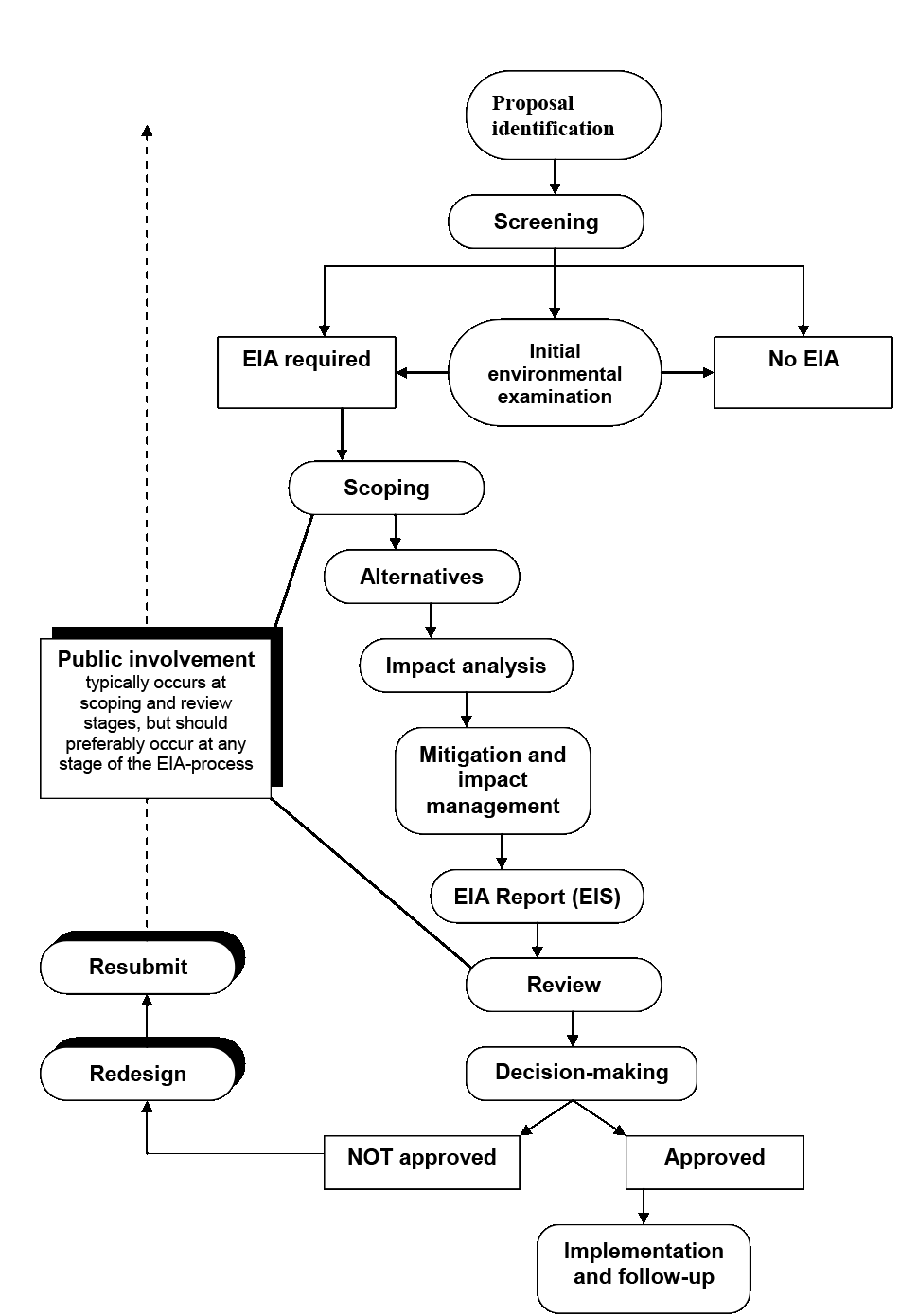
IMPACT ASSESSMENT
WHY
Apart from being a legal requirement, there are multiple reasons for doing impact assessments. It can help in improving project design and may avoid costly mistakes; it helps in better compliance with locally prevailing standards and norms; it contributes to more environmentally sensitive decisions and reduced environmental damage; it contributes to increased accountability and often helps in establishing good relations with surrounding communities; and it facilitates better informed corporate decision-making. Research shows that where IA is done well, companies have a higher rate of return on their investments. Therefore, an increasing number of large corporations voluntarily apply Environment and Social IImpact Assessment to new investments, even in countries where this is not legally required.
WHAT
The term Impact Assessment (IA) covers a family of tools that assists planners and project developers in avoiding or reducing environmental, social and economic risks and in enhancing potential benefits of new policies, programs plans, and projects. To be effective IA is carried out before major decisions have been taken, and preferably as early as possible in the design phase. Fundamental principles of impact assessment are:
-
Provision of valid information for decision making
-
Involvement of potentially affected stakeholders
-
Transparency in decision making
Well known IA tools are:
-Environmental Impact Assessment (EIA)
-Social Impact Assessment (SIA)
-Environmental and Social Impact Assessment (ESIA)
-Strategic Environmental Assessment (SEA)
HOW
Project proponents should try to avoid negative impacts and enhance positive impacts by alternative project design. Alternatives can be defined in terms of siting, technology or timing of activities, thereby differentiating between planning, construction, operation and decommissioning phases of a project. Comparison of alternatives gives relevant information on optimal design with most positive and least negative impacts. Negative impacts are preferably mitigated through avoidance, and alternative design. When negative effects cannot be avoided (e.g. the siting of a dam or mine concession) mitigation of impacts is the next step. If mitigation cannot be done satisfactorily, compensation or offset measures are the last resort measure (e.g. relocation of people; biodiversity loss compensated by protection elsewhere). The figure provides a generalised EIA process flowchart.
Contact us for more information or request a non-binding meeting!
RBA Impact Assessment Services
IA Process design: defining necessary steps, taking into account information needs, in-country legal requirements and requirements of financial organisations.
Scoping study: defining the issues that need to be studied in detail, the outline of alternatives to be taken into account, and identify relevant stakeholders to be consulted during the study.
Impact analysis: defining the profile of required expertise, draft ToRs and identify potential candidates to carry out the the IA.
Review: to avoid requests for additional information from formal review authorities, RBA can provide independent quality review of draft impact statements before formal submissions of the documents.
Training: In-house capacity development on impact assessment.

